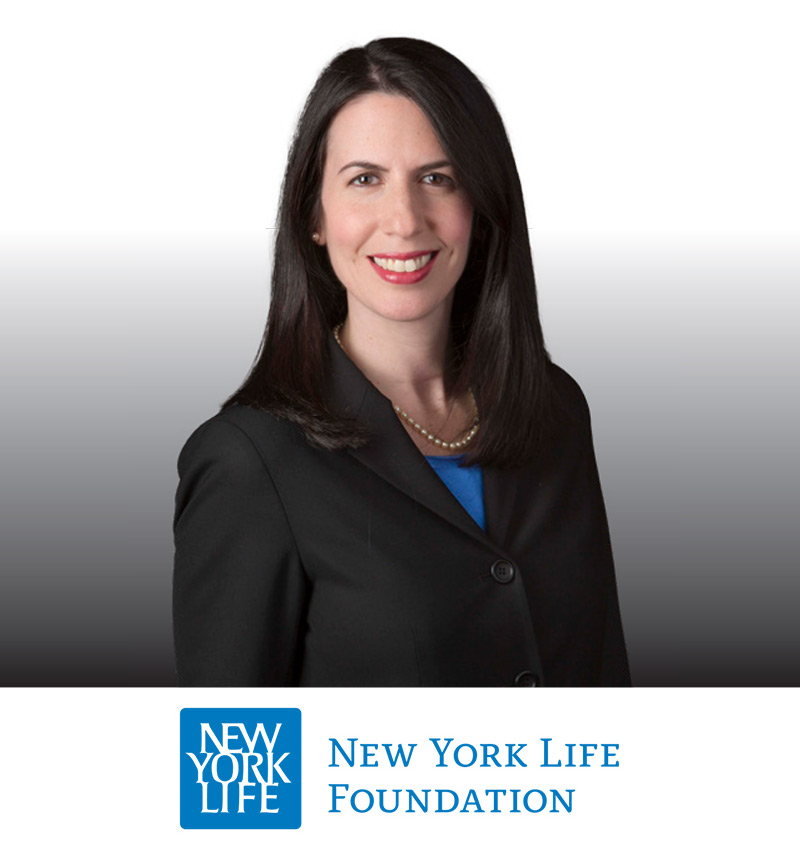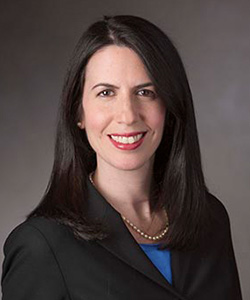By PDJ

“While the New York Life Foundation can’t change the entire system alone, we can fund ideas that could lead to larger systemic change,” says Heather Nesle, president of the New York Life Foundation and senior vice president of New York Life’s Corporate Responsibility. The charitable arm of America’s largest mutual life insurer, New York Life Foundation recently formalized its third focus area, social justice. This new pillar joins the Foundation’s already established pillars of childhood bereavement support and educational enhancement for middle school students.
In the following Q&A, Heather Nesle discusses the addition of the social justice pillar in depth, and provides important context, background, and processes underlying the Foundation’s grants and explains how this new pillar will increase its overall impact.
PDJ: Previously, the New York Life Foundation has provided grants and initiatives that serve underrepresented communities through your childhood bereavement and educational enhancement for middle school students focus areas. Why is the Foundation formalizing a third focus area of social justice now?
HN: At the New York Life Foundation, we want social justice to be top of mind and woven into everything we do. That’s why we’ve recently announced a commitment to invest $15 million in social justice organizations and programs by 2025. The addition of this third focus area allows us to have more flexibility outside of education and childhood bereavement to further align with our larger social justice ambition across New York Life. While we have certainly launched programs and initiatives in the past that helped address social justice-related issues, they fell under our established focus areas. Creating a separate pillar for social justice allows us to be more intentional in our approach to grantmaking in this space, which is outside of our longstanding focus areas of childhood bereavement and educational enhancement for middle school students.
Furthermore, solidifying the social justice pillar of the Foundation expands our reach and allows us to support historically underserved communities beyond just youth. For example, we recently created a partnership with Historically Black College and University (HBCU) Hampton University to provide assistance to students in the area of bereavement. As many students may not have the means to travel home to mourn the loss of a loved one, we sought to address this need by creating a funding pool to help them travel home or to a memorial service. To further relieve the financial burden experienced by students who’ve lost a family member or their primary provider, and ensure they can continue their higher education, we also dedicated funds to cover textbook purchases and similar educational expenses for these students.
We have also partnered with the school to provide workshops for students facing loss, linking them to resources across campus and giving them the space to express what they’re feeling and receive support. We’re looking to replicate this work at other HBCUs so that the loss of a loved one isn’t a reason for students to put their academic careers on pause or abandon them entirely.
PDJ: How does the Foundation define social justice? What’s the problem you’re looking to solve?
HN: For us, social justice involves working with organizations that advocate for equal rights and access across all populations, especially the historically overlooked communities that we’ve been targeting through our grantmaking efforts. We’ve been drawn to legal defense organizations that champion equal rights, access to information, and advocacy work, and are looking to educate and effect change within the confines of the law. That’s what helps shape and start to define that larger social justice pillar.
We also look for ideas on how to engage in this space from our own employees, agents, and policy owners to deeply consider what we’re doing and how we’re influencing equal rights for women, communities of color, individuals with disabilities, and those who are LGBTQ+.
Racial equity, more specifically creating generational wealth, is a focus for the company and has been for quite some time. From a philanthropic standpoint, we can try to make investments that will help to close the large demographic gap in generational wealth. New York Life has an opportunity based on our products and services to help start to shrink that gap. With one of the most diverse field forces in the industry, we can provide holistic advice and guidance about financial planning at an early age, as well as how life insurance can support future generations.
PDJ: The Foundation’s monetary investments are laudable, but where else is the New York Life Foundation creating impact?
HN: When we think about impact, we ask ourselves: How do we focus in on an aspect of an issue we care about, that may not be widely served? And, looking at it in a systemic way, how do we find pieces within that system to tackle—that can start to affect the larger issue and truly make a difference? What can we do that is groundbreaking or creates a good example? Our work in bereavement offers several examples.
Currently, there aren’t any true systems in place to identify youth who may have lost a caregiver and need resources and support. Most children who lose a parent are owed Social Security survivor benefits, but very few receive them, which is a large monetary loss for families that can certainly use the funding. Through convening our partners and working with local agencies in different parts of the country, we’re ideating and brainstorming ways to create systemic approaches to better reach youth who desperately need these resources. While our actions may vary grant-by-grant, we are always aiming for long-term impact.
In another example, we partner with Judi’s House/JAG Institute, a community-based nonprofit that provides therapeutic grief services for children and their adult caregivers, and conducts community-based research. We funded their Childhood Bereavement Estimation Model (CBEM) that uses data to identify demographics and populations of youth with the highest incidence of loss across all geographies in the United States. Bereavement centers across the country can then use that data to help understand which groups need the most support, and develop strategies to better reach these children.
Beyond grantmaking, through this new pillar, we are also aiming to amplify capacity support for Black, Indigenous, people of color (BIPOC) leadership and nonprofits; developing inroads with nonprofits that can provide training and even job placement; increasing the diversity of the Board of the Foundation; and piloting a program with our HR partners to place mid-level, high-performing New York Life BIPOC employees on boards of nonprofits to give them more leadership experience.
Additionally, in tandem with our company’s emphasis on generational wealth, we have been working with the Schomburg Center for Research in Black Culture for over 20 years. Of note, we are now working to support the library in digitizing numerous ledgers and records, so that people can more easily access and research their own familial ancestry and history. We’re also working with the International African American Museum that’s opening in January 2023 in Charleston, South Carolina, supporting their Center for Family History and genealogy efforts.
We try to make a difference with what we have and be as efficient as we can be. We approach our grant giving holistically. We’ll bring our data scientists, our technology team, our volunteers, and our employees—the full breadth of our skills and resources—to understand the untapped areas, identify the underlying issues, educate our populace, perform skill-based volunteering, and create sustainable solutions.
PDJ: What do you hope to learn by creating this pillar and partnering with organizations to support racial equity? What do you hope others will learn from the Foundation as a result of doing this work?
HN: As with everything we do, we’ll approach this space in a way that is authentic to New York Life and to our Foundation. I hope that we meet new engaging and innovative partners that we can support along the way, and I expect, as with our other established pillars, this pillar will become an all-encompassing focus for us.
This way we can continue to utilize all New York Life resources to create sustainable and scalable solutions to often-overlooked issues that disproportionately affect underserved communities. There’s a lot that can be accomplished here, and we’re excited to learn from and partner with others to make a real difference.
Read more about the New York Life Foundation’s social justice efforts here and here, and New York Life initiatives related to DE&I and social justice, including the company’s $1 billion impact investment initiative to help address the racial wealth gap, here. New York Life’s2021 Diversity, Equity & Inclusion Report can be found here.

Heather Nesle
Heather Nesle is president of the New York Life Foundation, the charitable foundation created by New York Life Insurance Company. In addition to her Foundation duties, she is senior vice president of New York Life’s Corporate Responsibility Department.






